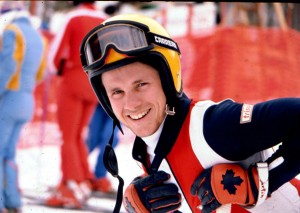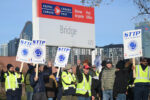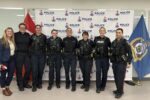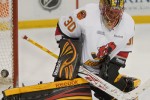News of long-term head injury facility in Napanee gives parents relief
By Steph Crosier

Mt. TREMBLANT, QUE (1977) Scott Finlay after winning a race a year before his devastating accident in 1978. Photo by Jean Bellumat
The parents of a former ski champion are relieved the Local Health Integration Unit (LHIN) has approved a new long-term head injury facility in Napanee.
For the past three decades, Hugh and Rosemary Finlay have been taking care of their son Scott in their Napanee home.
At 21, Scott suffered a career ending and almost life-ending brain injury at the Canadian ski championships at Lake Louise on February 24, 1978. The injury left Scott partially paralyzed, unable to talk, and restricted him to a wheelchair.
Since then his parents have been his main caregivers. For years, the Finlays have been advocating for a place to take in their son as they get older.
They are excited that their concerns are being addressed. A facility to serve people like Scott Finlay has been approved by the Local Health Integration Network in an empty building in Napanee that used to be a nursing home. The building’s location is ideal because it is across the street from the hospital.
The proposal is now awaiting approval by the Ministry of Health in Toronto.
“It’s been on my mind for years, since my son got hurt,” said Hugh Finlay. “People get older there’s no place for their young sons and daughters to go.”
Doctors recommended sending Scott to a nursing home but the Finlays refused.
“The senior citizens’ home would be the pits,” said Finlay. “I don’t think you would want to be there either. He’s alert inside, he just can’t walk or talk.”
With support from friends all over the country and in Napanee, the LHIN has approved the facility.
Finlay said the LHIN, which administers health facilities in the region, has done surveys and determined that this area needs such a facility.
Finlay says the building is perfect for a long-term facility. It already has a doctors’ clinic with seven doctors, a dentist, a drug store, a blood clinic, a senior’s outreach, a new $100,000 van, and a new $70,000 kitchen.
“The building is all there, they just need to redo the inside,” said Finlay.
Finlay did some fundraising but says the National Ski Team has taken the lead.
“We’ve done some but the National Ski team have taken that over,” said Finlay. “Because those are all Scott’s friends. They were a bunch of brothers with each other.”
Jeff Armstrong, Scott’s good friend and former teammate, says it took only a letter and a video and article by the Toronto Star to convince the ski community to help out. Some knew Scott, some knew of him, some didn’t know him at all. All heard his story and the donations were immense.
“It was not until six months ago I figured I could help out,” said Armstrong. “There were a lot of people in the ski community and a lot of alumni of the team, and even the regional ski team who knew Scott – like me a lot of people who were frustrated they couldn’t do anything.”
“They’ve raised over $250,000,” said Finlay. “Just from the article in the Toronto Star. We never asked anybody that’s just from that.”
Nancy Esson, president of Alpine Ontario, was one of Jeff and Scott’s teammates.
“I think everyone who was there on that day feels terrible about it,” said Esson. “We also feel some responsibility to help him out because that could have happened to anybody.”
When she heard about the facility, the ski association helped by promoting the fundraising campaign, notices, and videos.
“The ski racing community is quite tight,” said Esson. “Hopefully we’ll pull together in the in the good times to celebrate the victories, but will also pull together in the tough times to help the less fortunate.”
Scott is not the only person who would benefit from the facility, which would be the only one in this area. There are 11 other families lined up to get into the facility.
“There are 11 people from Belleville and Kingston area,” said Finlay. “We’ve already gotten calls just from the article in the Toronto Star wondering if they moved to Napanee if they would be able to get in.”
Mary-Ellen Thompson is the president of the brain injury association in the Quinte district. Thompson said that anything to help brain injury survivors function in the community is a wonderful thing. She acknowledges the benefits but also has a warning.
“Our goal is to make people the best they can be,” said Thompson. “If you were living in your home independently before the accident, the best outcome is that you are living in your home independently after your accident. That may not be realistic for everybody, so there are certain types of people that home would be perfect for. But there are also other people who we want to return to their own home in their own community.”
With only one more approval to come, the Finlays are relieved knowing the facility will help a lot of families in a similar situation.
“As you get older to worry about if something happens to their mom and dad, where is he going to go?” said Hugh Finlay. “I don’t care how old you are, you worry about your family. Blood runs thicker then water.”
 Print This Post
Print This Post






